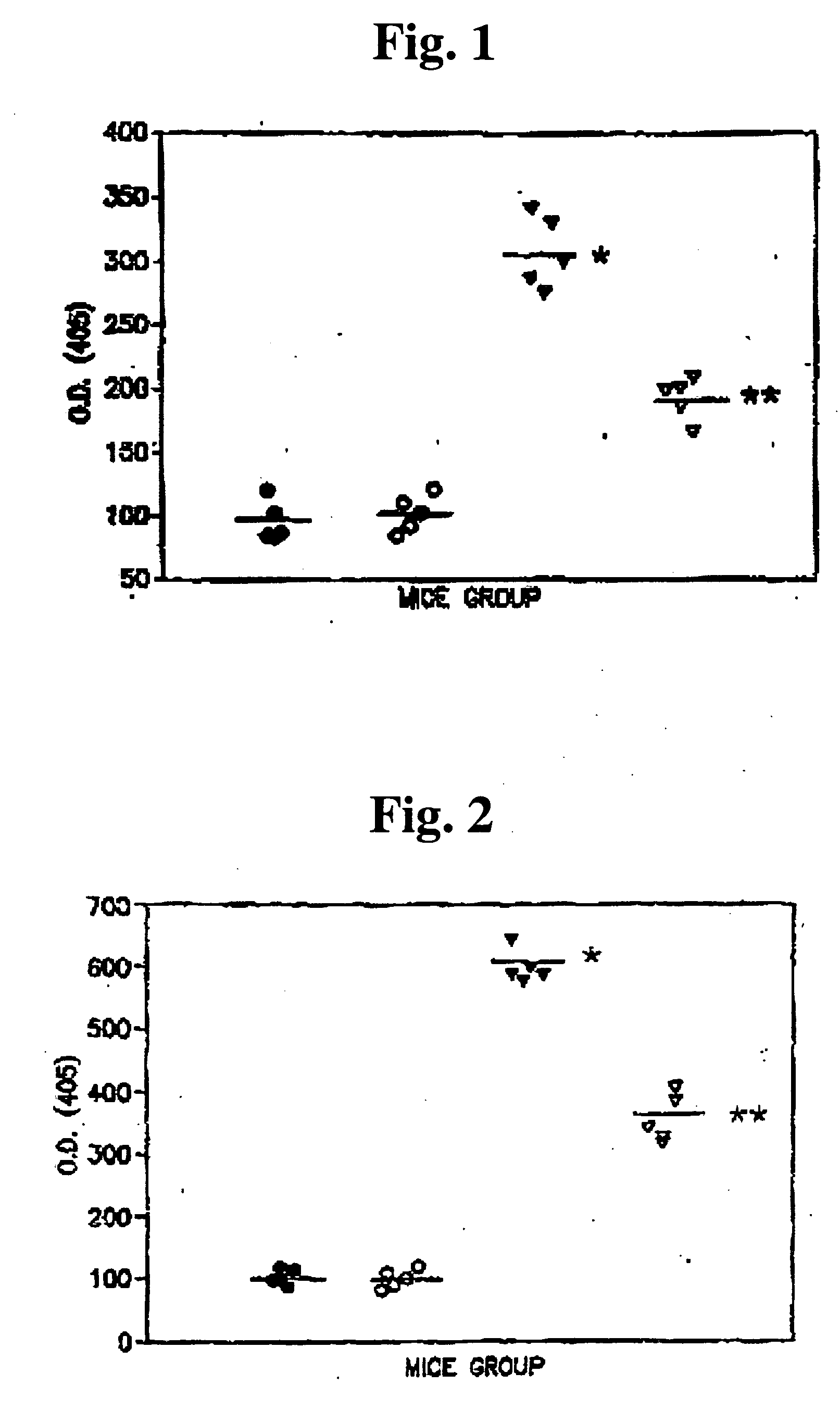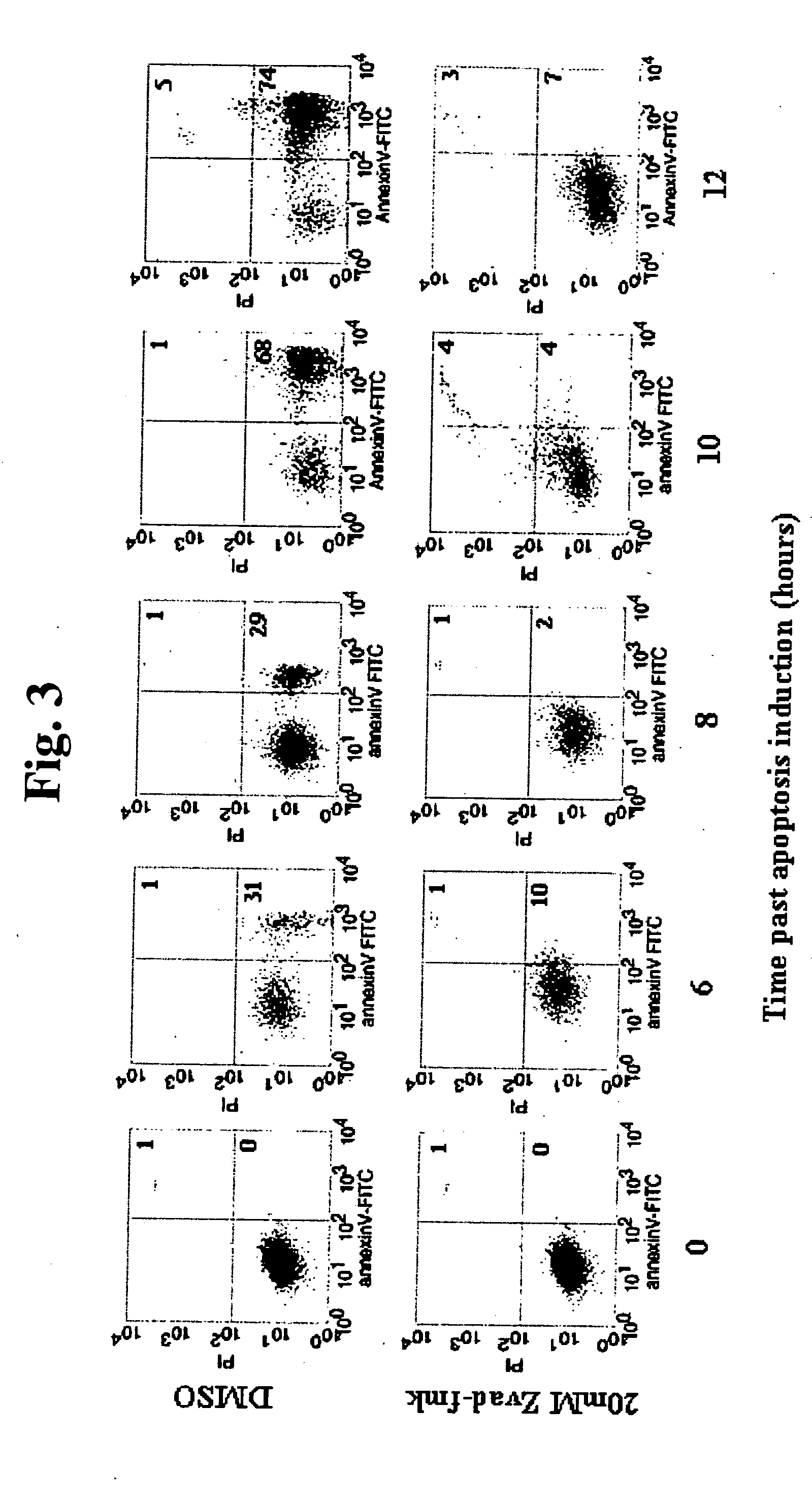Disease therapy using dying or dead cells
- Summary
- Abstract
- Description
- Claims
- Application Information
AI Technical Summary
Benefits of technology
Problems solved by technology
Method used
Image
Examples
example 1
Treatment of an Autoimmune Disease (SLE) by Administration of Syngeneic Apoptotic Lymphocytes
[0185] Introductions: Autoimmune diseases, such as systemic lupus erythematosus (SLE), include numerous highly debilitating and / or lethal diseases for which there is no satisfactory or optimal therapy. An optimal strategy for treating such diseases would be to present targeted antigens to the immune system of an individual afflicted with such a disease in, such a way as to induce tolerances to such antigens by the immune system of the individual. An optimal way to achieve this goal would be to employ autologous apoptotic cells, which would obviate or minimize the necessity for administration of toxic immunosuppressive agents, the standard means of treatment in the art. While various approaches have been proposed in the prior art for using autologous cells to induce such therapeutic immune tolerance, such approaches suffer from various drawbacks, including suboptimal effectiveness, and / or fa...
example 2
Monocytes Suspended Ex-Vivo Undergo Necrosis and Produce Whereas Substrate-Adherent Ex-Vivo Monocytes Undergo Apoptosis Without Pro-Inflammatory Mediator Production: Method of Improving Prior Art Apheresis Procedures
[0200] Introduction: Immune / hematological diseases, such as graft versus host disease (GVHD), include a large number of diseases which are associated with significant mortality and morbidity, and for which no satisfactory / optimal treatments are available. In a very large number of cases the optimal strategy for treating such diseases involves performing apheresis procedures. Typically, apheresis procedures involve removing blood from an individual, separating the blood into fractions and performing therapeutic treatment of specific fractions, removing undesirable pathological fractions and reinfusing the remainder to the individual, or harvesting desired may be associated with undesirable side-effects and / or suboptimal effectiveness. Therefore, a potentially optimal str...
example 3
Therapeutic Usage of Apoptotic Lymphocytes
[0225] Apoptotic lymphocytes have an immunosuppressive, tolerizing, and anti-inflammatory effect provided they are isolated in the right way and therapeutically in the right conditions and if mixed with other cells, only in controlled way (which does not occur spontaneously in leukocytes from the blood). Described below are methods of suitably obtaining and administering apoptotic lymphocytes for treatment of various disease conditions.
[0226] Materials and Methods:
[0227] Generation of Apoptotic Lymphocytes:
[0228] 1. Isolation of up to 1 billion PBMCs from up to 500 milliliters autologous blood, or up to 10 billion PBMCs by leukocyte apheresis.
[0229] 2. Isolation of lymphocytes from PBMCs using magnetic beads conjugated to ligands of lymphocyte surface markers, or by subtraction of adherent lymphocytes.
[0230] 4. Induction of lymphocyte apoptosis by one or more of the following methods: [0231] (i) serum withdrawal-induced apoptosis; [023...
PUM
| Property | Measurement | Unit |
|---|---|---|
| Weight | aaaaa | aaaaa |
| Force | aaaaa | aaaaa |
| Surface | aaaaa | aaaaa |
Abstract
Description
Claims
Application Information
 Login to View More
Login to View More - R&D
- Intellectual Property
- Life Sciences
- Materials
- Tech Scout
- Unparalleled Data Quality
- Higher Quality Content
- 60% Fewer Hallucinations
Browse by: Latest US Patents, China's latest patents, Technical Efficacy Thesaurus, Application Domain, Technology Topic, Popular Technical Reports.
© 2025 PatSnap. All rights reserved.Legal|Privacy policy|Modern Slavery Act Transparency Statement|Sitemap|About US| Contact US: help@patsnap.com



